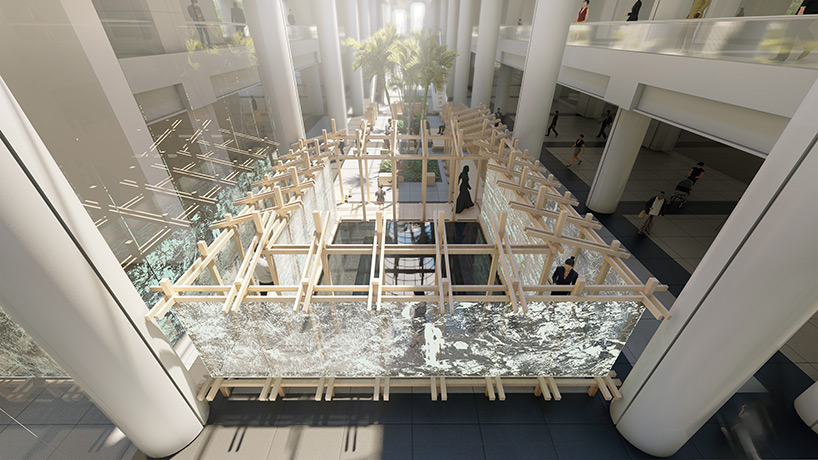How Does Architecture Promote Social Connectivity In Public Spaces?

As architects around the globe strive to create functional structures for a post-COVID world, the adaptation of public pavilion architecture has become increasingly essential. This is because, for many people, public pavilions are a symbol of normality - a place to gather, meet friends, and enjoy the outdoors. But in a world where social distancing is now the norm, pavilion architecture must adapt to meet the needs of today's society.
Here are a few points to consider when designing pavilions in a post-COVID world:
1. Prioritize Connectivity
Whether it's a park pavilion, a beachside shelter, or a street-side kiosk, public pavilions must prioritize connectivity between people. After all, the main aim of these structures is to create a communal hub that encourages interaction and community spirit. Architects must think about how to create pavilions that still achieve these goals while ensuring that social distancing measures are met.
This might involve creating smaller social circles within the pavilion structure, using barriers or dividers to create separate seating areas for people or even creating outdoor pavilions that still provide shelter from the elements while encouraging users to spread out and enjoy the great outdoors.
2. Consider Materials Carefully
COVID-19 has taught us that personal hygiene is essential, and this extends to pavilion architecture. Designers must think carefully about the materials they use to construct pavilions, choosing options that are easy to clean and sanitize. For example, materials like metal, fiberglass, or even concrete might be preferable to wood, which is a porous material that can harbor bacteria.
Designers should also think about how the materials they choose can help to reduce the spread of airborne particles. One option might be to create pavilions with a high degree of natural ventilation, using open-air construction methods that allow fresh air to circulate through the structure rather than relying on recirculated air conditioning systems.
3. Maintain Accessibility
Public pavilions are for everyone, regardless of age, ability, or mobility. As such, pavilion architecture must remain accessible to all. This means designing pavilions with wide, open entrances and exits that are easy to navigate with wheelchairs, walkers, or other mobility aids. The pavilion's interior layout should also be flexible enough to cater to different groups of people, and designers should consider incorporating accessibility features like tactile paving or audible signals for visually impaired users.
4. Encourage Sustainable Design
COVID-19 has taught us that we must build a more sustainable future, and pavilion architecture is no exception. Designers should look for ways to incorporate sustainable design elements into their pavilion structures, such as using recycled or natural materials, capturing rainwater for irrigation or greywater reuse, or even incorporating solar panels or other renewable energy sources into the design.
Another important consideration is the pavilion's carbon footprint. Designers should look for ways to reduce the amount of energy required to construct and operate the pavilion, such as using prefabricated components or designing the structure to naturally take advantage of passive heating and cooling systems.
5. Incorporate Technology
In a post-COVID world, technology has become vital to everyday life, and pavilion architecture is no exception. Designers should look for ways to incorporate technology into their pavilion designs, such as using contactless payment systems, incorporating touchless light switches, or even designing structures that incorporate augmented reality or virtual reality technology for a more immersive user experience.
Designing pavilions that take COVID-19 and other future pandemics into account is a complex task, but by prioritizing connectivity, choosing materials carefully, maintaining accessibility, encouraging sustainable design, and incorporating technology, architects can create structures that meet the needs of today's society while remaining functional for years to come.
FAQ:
What is a public pavilion?
A public pavilion is a small structure commonly found in parks, beaches, and other public spaces. They are usually designed to offer shelter to people using the area and can be used for anything from picnics and barbecues to outdoor community gatherings.
Why is pavilion architecture important in a post-COVID world?
Pavilion architecture is essential in a post-COVID world because these structures play an important role in public life. They are a gathering place for people to connect, and in the current climate, designers must be mindful of how to create pavilions that meet social distancing requirements while still fulfilling their intended purpose.
What materials should designers use to build pavilions in a post-COVID world?
Designers should choose materials that are easy to clean and sanitize, such as metal, fiberglass, or concrete. Wood, which is a porous material that can harbor bacteria, should be avoided where possible.
What sustainable design elements can be incorporated into pavilion architecture?
Designers can incorporate a range of sustainable design elements into pavilion architecture, such as using recycled or natural materials, capturing rainwater for irrigation or greywater reuse, or even incorporating solar panels or other renewable energy sources into the design.
Creating pavilion architectures that cater to the needs of today's society while taking into account the challenges of COVID-19 is essential. The design of these structures must now consider the aforementioned points to ensure that users can enjoy these public spaces without risking their health. Architects must work towards creating structures that are not only functional but have a positive impact on the community and the environment. Only by taking these issues into account, can we build a more sustainable and safe future.



Post a Comment for "How Does Architecture Promote Social Connectivity In Public Spaces?"